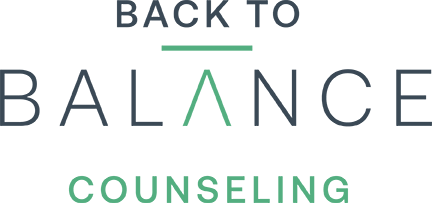Exposure Therapy is a specialized type of Cognitive Behavioral Therapy that is used to treat a variety of anxiety disorders such as Generalized Anxiety Disorder, Obsessive Compulsive Disorder, Health Anxiety, and phobias. This approach has a long history of empirical support shown to reduce the symptoms associated with anxiety. Some studies show that clients can experience relief rather quickly. The goal is to use various techniques involving exposing the client to anxiety provoking situations and learning how to process these situations with a decreased level of fear or anxiety. Having exposure to feared situations, objects, or activities in a more neutral setting helps to reduce the fear and decrease the frequency of avoidance. Exposure Therapy is known to have great results, but the technique is unfortunately underutilized by clinicians.
So what exactly does Exposure Therapy look like?
Great question! Let’s use an example because it’s a little easier to understand. I’m going to use more of an extreme example so you can fully understand. Let’s pretend that you come in with a presenting concern being a fear of dogs.
We would begin some visual and auditory exercises. For example, we might practice naming different types of dogs or using other words associated with dogs. There may also be a focus on reading about or looking at pictures of fictional dogs (as silly as it may seem). Once this is tolerated well with only a minimum level of anxiety, we would then begin looking at pictures of real dogs. Eventually, we would listen to audio of dogs and watch videos of dogs. All of these exposures would be using friendly images and recordings. Again, each step is done gradually until levels of discomfort can be tolerated.
After some visual and auditory experiences, we would then move into some role-play exercises using our imagination. We might examine what certain dog behaviors mean by recreating them in the office setting. By recreating these behaviors, we can vividly describe what an interaction with a dog might be like. Lastly, we would imagine what it would be like to be in the presence of a friendly, real dog.
Finally, we would do what’s called in vivo exposures. This is usually what clients refers to as the “real life” stuff. We could begin by listening to a dog that is contained in another room. That can transition into looking at a dog that is contained securely. Once this is completed, we would begin learning how to approach a dog that is on a leash. Next, the exposures will focus on touching the dog, giving the dog commands, or providing a treat. All of these steps are repeated until the fear associated with this trigger can be tolerated.
Exposure Therapy also focuses on reducing avoidance behaviors associated with the feared object or situation. These activities can often be given as homework assignments. For example, a client with a fear of dogs would be encouraged to visit homes of people with safe dogs. They would also be encouraged to go on walks through the neighborhood or the park and remain on the same side of the sidewalk as the dog. The focus is to decrease the avoidant behavior that has become habitual.
This was a very thorough example of what Exposure Therapy can look like. Some clients are comfortable going straight to in vivo exposures and choose to skip the visualizations and role-play portion. Keep in mind that each client has different needs and concerns, so what works for one doesn’t work for all. I definitely do not use a one size fits all approach. Exposure Therapy works hand in hand with components of Cognitive Behavioral Therapy involving cognitive restructuring and relaxation techniques. During exposures, clients are encouraged to utilize the skills learned during CBT training to increase tolerance of feared situations or objects.


